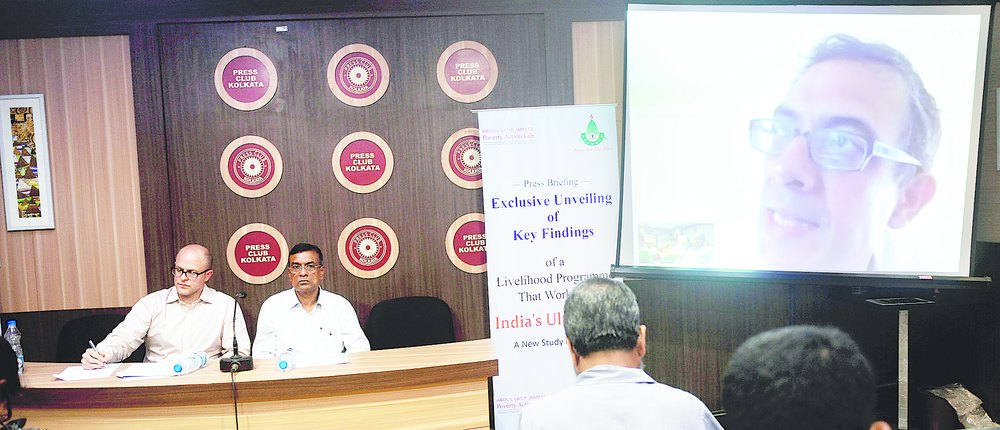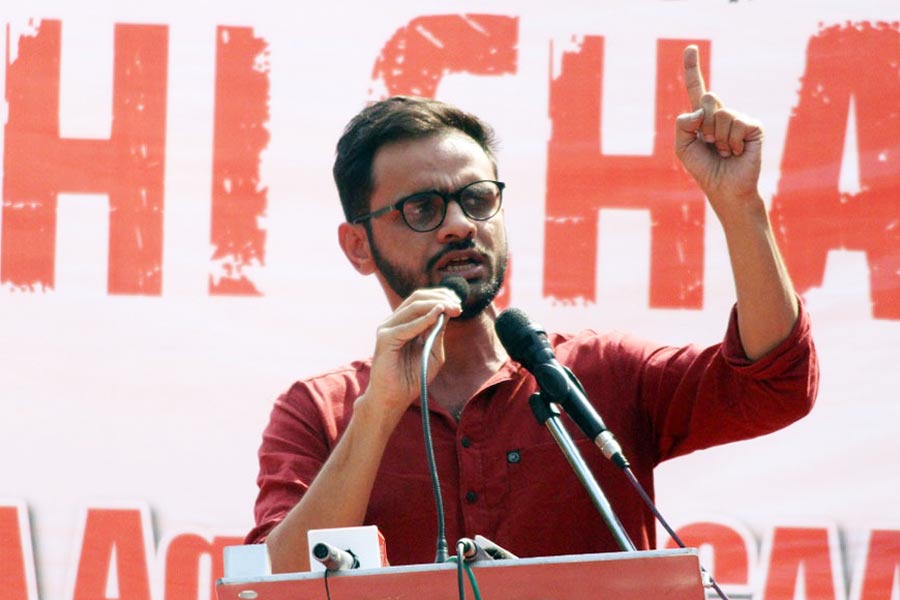
Standard model: The state provides a poor woman employment for 58 days a year, under the 100-day job guarantee scheme, at (Bengal's) daily wage rate of Rs 169. Cost: about Rs 20,000 over two years.
Alternative: The state provides her an asset - maybe a small grocery - teaches her to run it and monitors her progress while giving a daily stipend for her consumption needs and ensuring basic healthcare for the family. Cost: about Rs 20,000 over two years.
Calcutta, May 15: An alternative model that focuses on developing rural women's entrepreneurial abilities could help combat poverty better than programmes like the rural job scheme, evidence gathered by the economics department at the Massachusetts Institute of Technology appears to suggest.
Research by the MIT's Abdul Latif Jameel Poverty Action Lab, which aims to "reduce poverty by ensuring that policy is informed by scientific evidence", can help design livelihood programmes in countries like India, lab director and economist Abhijit Vinayak Banerjee believes.
Banerjee said this over Skype from America during a Q&A after John Floretta, deputy director of the poverty lab, revealed the results of a study that analysed evidence collected from an experiment conducted across six countries from 2007 to 2010.
The researchers assessed the effectiveness of their "graduation model" on 21,000 ultra-poor in India, Pakistan, Ethiopia, Ghana, Peru and Honduras and then compared it with the impact of standard livelihood schemes.
"Unlike the standard approach of handing out benefits, cash or credit, the attempt to develop entrepreneurial abilities among ultra-poor women leads to greater welfare," said Chandra Shekhar Ghosh, chairman and managing director of Bandhan Financial Services, which was part of the MIT experiment.
Bandhan, the first micro-credit firm in the country to have received a banking licence, handled the experiment's Indian component.
One of its wings, Bandhan-Konnagar, has been implementing the "graduation model" in 28 districts across the six states of Bengal, Assam, Tripura, Bihar, Odisha and Madhya Pradesh. It has by now covered 32,000-plus households.
Unlike schemes providing micro-credit or creating self-help groups, the graduation model does not require the beneficiaries to repay the asset costs. As the beneficiaries receive a stipend to meet their daily needs and are trained on handling the asset, their chances of managing the assets efficiently are higher.
Ghosh said the two-year outgo on each beneficiary - including the spending on the trainers and healthcare - has been around Rs 20,000, roughly what the government would spend if the beneficiaries received 58 days' employment a year. He said that one reason for the model's success was the cheap cost of entrepreneurial training in India.
"In Bengal, we have carried this experiment out in Murshidabad. The best part is that in most cases, the women don't want any more help after the two-year period of hand-holding," he said.
Ghosh said the beneficiaries' consumption levels - a yardstick to assess livelihood standards - rose 26 per cent after the programme.
Beneficiaries of standard programmes like the job guarantee scheme, on the other hand, tend to get dependent on government assistance.
Banerjee didn't want to be drawn into comparisons between the MIT model and the primarily dole-driven livelihood programmes in India but said the states could recruit NGO help and explore the alternative approach.
Both Ghosh and Floretta stressed the need to scale up Bandhan-Konnagar's programme but admitted that this would require a large pool of committed trainers who would teach the beneficiaries how to manage the assets and monitor their progress regularly.










